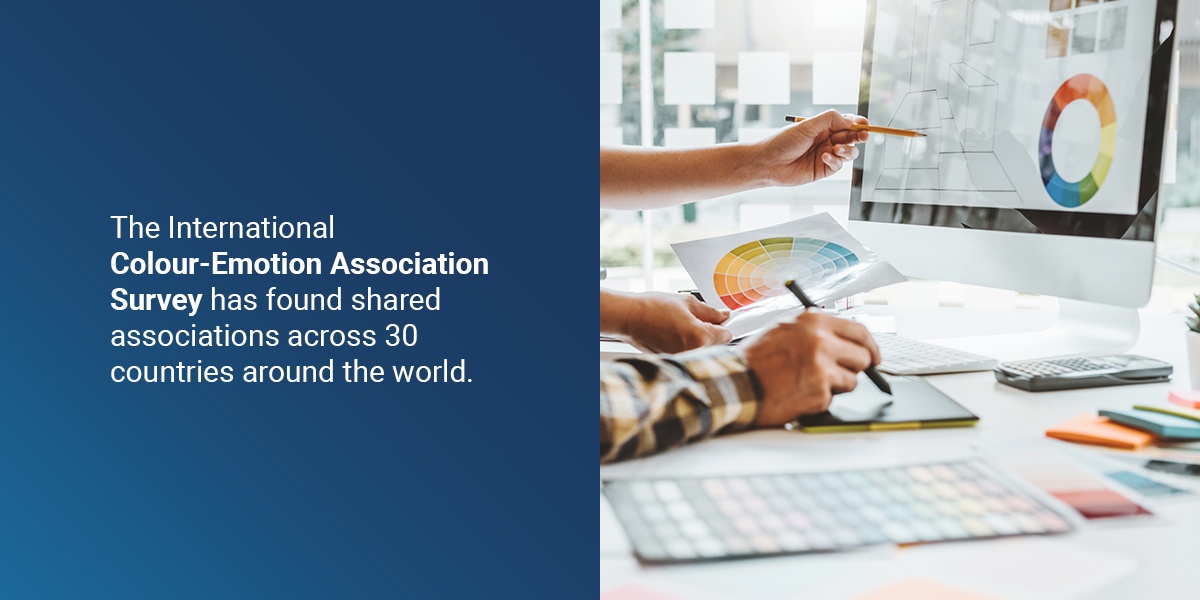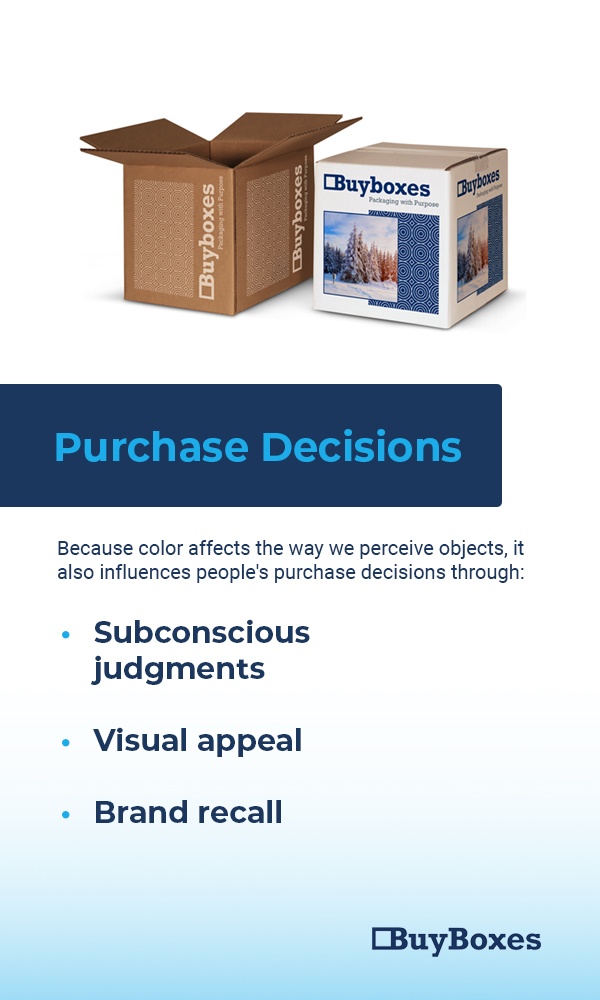How Does Color Affect Marketing and Branding?
Color plays a significant role in how we perceive objects, affecting our responses, emotions, actions and opinions. An object’s color even affects our ability to recognize it. Take an orange, for example. If you saw a purple orange — without being able to touch, taste or smell it — would you be able to recognize it?
You might have heard other marketers discussing the importance of choosing the right colors for your brand. But exactly how does color affect marketing and branding? The answer lies in color psychology.
Table of Contents
What Is Color Psychology?
The psychology of color analyzes the relationship between our minds and the color of an object. This relationship can predispose us to behave a certain way or elicit specific emotions. For example, a red street sign will usually incline you to stop, an orange sign urges caution and a pink greeting card might make you think of Valentine’s Day or romance.
How Does Color Psychology Work?
While more research is still necessary, scientists have found many possible factors that affect the way we respond to color, including:
- Culture: Along with cultural similarities, countries near each other geographically more closely share color-emotion associations than countries farther apart. Since different cultures associate different colors with events like weddings and funerals, it seems that cultural similarities can influence color perceptions.
- Past experiences: Seeing a color during an emotional experience can affect our future emotional associations with that color.
- Language: Researchers who studied the differences in color perception between Mongolian and Mandarin speakers found that language impacts how we distinguish between colors. Mongolian speakers have separate words for light blue and dark blue, while Mandarin speakers do not. The study found that participants in each group performed differently when asked to sort shades of blue.
- Biology: One study suggests that babies can group colors into five categories. Because this categorization took place before the babies knew the names of colors, it indicates that biology plays a role in our perception of color, too.
The rest of this article will outline how these psychological factors can help you understand the effects of colors in marketing — namely, how your brand colors might impact consumers’ purchase decisions and brand perceptions.
What Do Colors Mean?

To make effective branding decisions, you first need to understand what different colors mean to your audience. While experiential, linguistic and cultural variations all affect color perception, the International Colour-Emotion Association Survey has found shared associations across 30 countries around the world. These universal connections help establish a foundation for using color psychology in marketing.
As a starting point, we’ve compiled a list of some of the survey’s common color meanings:
- Red: We often associate red with danger, power and aggression. Perhaps more than any other color, however, we draw a wide range of positive and negative connections to red. One of the starkest examples of this range is people’s tendency to associate red with either love or hate.
- Yellow: Like warm rays of sunshine, yellow often has a mood-brightening effect. Perhaps because of its association with the sun, many people link yellow with positive emotions like warmth and happiness.
- Orange: People worldwide associate orange with positive emotions like joy, amusement and pleasure. Along with red, the vibrancy of orange can grab people’s attention.
- Blue: A common American figure of speech — “I’m feeling blue” — conflates blue with sadness. However, blue can also increase feelings of calm, relief and contentment.
- Green: U.S. advertising often uses green on products tied to environmentalism, emphasizing the prominence of green in nature. Beyond this, however, green encourages feelings of contentment, relief, pleasure and joy. This color also has a shorter wavelength, making people more likely to find it relaxing than colors with longer wavelengths.
- Purple: The rarity of purple in our natural environment bleeds into how we view the color, prompting us to see it as intriguing. This sense of intrigue carries over into an association with the unknown and spirituality.
- Pink: We commonly consider pink a feminine color or associate it with romance. However, the color can elicit a wide range of emotional responses depending on its hue. While pale pink can be calming, bright pink often has an energizing effect. Worldwide, people overwhelmingly associate pink with love, pleasure and joy.
- Brown: Many people associate brown with reliability and tradition. However, depending on your audience, brown may instead elicit feelings of boredom, disappointment and disgust.
- Black: Western culture most commonly associates black with formal events and funerals, sophistication and sadness.
- White: Hospitals are often predominantly white because we associate white with cleanliness. White can also convey purity or innocence.
Color Meanings Across Cultures
While these are some common associations of 10 basic colors, we also must consider how culture affects color perceptions. The International Color-Emotion Survey both found many common associations across cultures and highlighted additional culture-specific perceptions. Further, the survey found weaker cross-cultural similarity with purple than any other color.
If you’re marketing to a global audience, research the common cultural associations with any colors you might use in your branding.
For example, while Americans most often use green to symbolize jealousy, Germans connect jealousy with yellow. To add to the complexity, the French associate yellow with dishonesty, while it’s a symbol of royalty in Chinese culture.
The symbolism of white is also significantly different between East and West. Western cultures frequently see it as a symbol of cleanliness, innocence and purity. However, many Eastern cultures use white for funerals and mourning and associate the color with sadness and death.
Linguistic differences also impact the way we see and use color. While Americans might say something like “seeing red” to suggest anger, Lithuanians use a range of colors to describe the intensity of their anger. White represents the lower end of the spectrum, while black suggests intense anger.
Those two examples alone illustrate just how variable the meanings of colors can be across cultures. Make sure your brand communicates the message you’re aiming for by researching and adapting your brand colors across borders as necessary.
How Do You Choose the Right Colors for Your Brand?



Now that you understand the psychology behind colors have a firm grasp of what different colors might mean across cultures, how do you use that knowledge to determine the right colors for your brand? To start, we’ll look at how colors affect marketing strategies and some general considerations to keep in mind while making your decisions.
Colors are used in marketing to connect your brand with your audience and help communicate information visually. Ensure that your audience can make out essential information — all packing, ads, webpages and other touchpoints should be accessible and legible. Use contrasting colors for your backgrounds and anything placed on top of them and ensure you account for common types of color blindness.
With those considerations covered, you can dive into more brand-specific color choices.
Show Your Brand’s Personality
When you think of Home Depot, what are some of the first things that come to mind? The color orange is likely one of them.
Your brand’s colors can easily become one of the first things consumers notice and one of the first things they recall about it. This association makes it critical to select colors that accurately communicate your brand.
In the same way that we draw broad connections between colors and emotions, we can also draw associations between color and perceptions of brand personality.
However, the link between colors and marketing is more complex yet. Research shows that certain brands have been able to prime consumers to link new meanings with their iconic brand colors — for example, people have different associations for Cadbury purple than generic purple. Other brands within the same product category can also leverage these new associations.
Consider how your competitive environment helps shape the link between colors and your brand personality. Be aware of brands with iconic colors — how consumers perceive those brands might affect how they perceive you. You might leverage these color icons to communicate your own desired brand personality, or you might diverge from them to help you stand out.
Align With Your Audience
In addition to aligning your colors with your brand personality, you should also align them with your audience. Consider your audience’s cultural and linguistic experiences and how they might influence your customers’ perceptions of your chosen colors.
You should also consider whether you’re primarily marketing to a B2B or B2C audience, as these customers will be in very different states of mind when purchasing and base their purchase decisions on different factors.
Why Is Color Important in Marketing?
Making strategic choices for your brand’s colors becomes imperative when considering how colors play a role in marketing. Beyond communicating your brand’s personality, selecting appropriate colors can positively influence consumers’ purchase decisions and help differentiate your offerings from the competition.
Purchase Decisions
Because color affects the way we perceive objects, it also influences people’s purchase decisions through:
- Subconscious judgments: Color accounts for up to 90% of a customer’s initial decision about a product.
- Visual appeal: The look and feel of a product influence 93& of a consumer’s purchasing decision — when people find something visually appealing, they’re much more likely to buy it.
- Brand recall: Color can significantly influence brand recall and customers’ purchase decisions when encountering a new brand.
Brand Differentiation
Brand colors play a significant role when customers observe and recall brands, helping them distinguish your brand from the competition.
For example, if you’re in a product category with companies that predominantly use shades of green, branding yourself with blue or yellow can set you apart. However, if you’re in a high-involvement product category with a dominant market leader, research suggests that you might be better off sticking to the color status quo.
How Does Packaging Tie Into Color Psychology?
The packaging you use is the only universal touchpoint all your customers will have with your brand. While some people may find you on social media, in-store or on your website, everyone who purchases from your company will come into contact with your packaging.
Make the most of this opportunity by highlighting your brand’s personality through your packaging. Design unique boxes, labels and logos to help drive brand recognition. Take your packaging design a step further by curating an interactive unboxing experience that will truly delight your customers.
Further, your packaging forms the exterior of your product as customers see it on the shelf — or, in the case of online ordering, on the customer’s front porch. With color playing such a major role in consumers’ purchase decisions, it’s easy to see how the color of your packaging can make or break your customers’ opinions of your product.
How Do You Determine Your Box Color?
Keep color psychology in mind when deciding what color your business’s box should be. Focus on colors that suit your branding, align with your customers’ state of mind and cultural perceptions, help you stand out and ultimately delight your end user.
Also, remember to keep your packaging design legible. The color of your box should complement and appropriately contrast with the colors of any text printed on the box’s interior or exterior. For example, you might print your brand name, logo or other messaging on the box. While bright shades of pink and orange are vibrant, energizing and eye-catching, pink letters on an orange background will be difficult to read. Ensure that customers can easily see all elements by choosing a box color that draws the eye while still letting the information stand out.
Before making the ultimate decision, test your box colors. Color psychology is complex, highly subjective and variable. The best way to ensure your box’s colors will have the desired effect is by putting your newly designed packaging into action and analyzing the data. Consider surveying the new packaging’s impact on customers’ perceptions. Collecting data about any changes in key performance indicators such as conversions, reviews or customer retention can help you determine if you have a solid design or one that needs reworking.
Turn to BuyBoxes for Your Packaging Design Needs
When you’re ready to hit the ground running with your design ideas, turn to BuyBoxes.
Our team of experienced engineers knows how to design the optimal packaging for your business needs. With our high-quality printing capabilities and dedication to finding solutions that work for your unique needs, you can trust BuyBoxes to help you create a box that will make your brand shine.
If you need fewer than 750 boxes, head over to BuyBoxes Studio to customize our box options today. If you need more than 750 boxes, contact us today to learn how BuyBoxes Business can help you create the right packaging for your brand.



